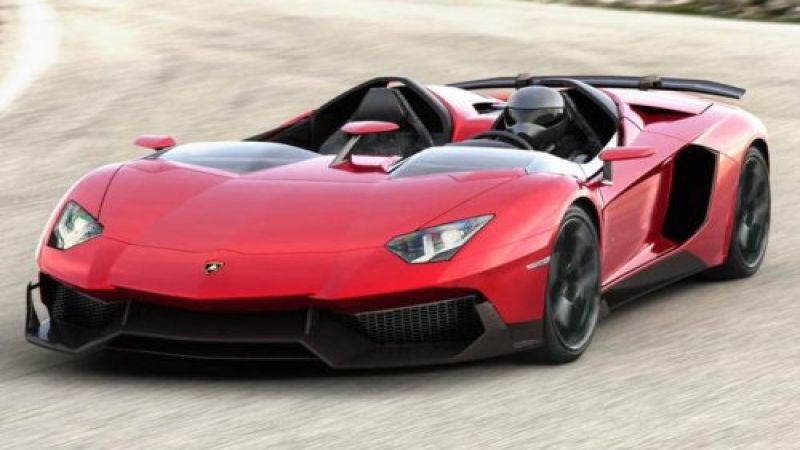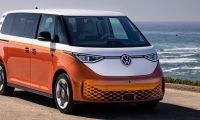This show traditionally is one of the most important auto shows in the world and an important launch site for various European brands. The show runs through March 18, and will attract press, celebrities, and car aficionados from around the world. There are 260 exhibitors from 30 different countries showing wares in eight categories or sections:
• Private motor cars
• Electric and alternative-propulsion cars
• Special bodywork for motor cars, design and engineering
• Converted cars (tuners)
• Accessories and components
• Original Equipment Manufacturers (OEM)
• Workshop installations
• Miscellaneous products and services
Top manufacturers usually unveil major introductions or new innovations at the Show. This year about 140 World and European premieres have been announced in the categories of “passenger cars”, “special bodywork” and “converted cars.” Forty world and European premieres have been registered by the accessories, OEM and workshop installations categories.
With this much activity going on it’s hard to know where to start talking about the show. But here’s an attempt to isolate four European cars that you can’t ignore:
This concept is the first SUV under development by Bentley and scheduled for introduction as a 2016 model. The car is hard to ignore: it’s big, it’s brash, it’s full of bling, and, well, it’s a Bentley. The vehicle most resembles a Bentley Mulsanne, which itself looks like a Continental in steroids. What do you get when you take a car on steroids, lengthen it, raise it, add all-wheel drive, and add off-road capability (and weight)? An EXP 9F of course.
The car likely will be built on the large SUV platform that currently is used by VW on the Audi Q7. The EXP 9 F Concept uses a 6.0-liter twin-turbo W-12 good for about 600 hp and 590 lb-ft of torque paired to an eight-speed automatic. But rumor has it that the SUV will be available with the brand's first-ever vehicle plug-in hybrid powertrain.
The interior is packed with handcrafted leather and wood of course. The rear tailgate doubles as a picnic table complete with extendable awning, and the car is equipped with plates, silverware, and cocktail glasses. Who doesn’t need those?
This year’s Car of the Year award went to the Opel/Vauxhall Ampera, the sister car to the Chevy Volt. The jury was made up of 59 journalists from 23 countries. The Car of the Year has been awarded since 1964 and was created by seven European magazines from seven countries: Germany (Stern), Italy (Auto), France (L'Automobile), Spain (Autopista), Great Britain (Autocar), The Netherlands (Autovisie) and Sweden (Vi Bilägare).
The choice of the Ampera is a controversial one. While nearly universally acclaimed by critics and politicians, the Volt has not been a commercial success. Recently GM announced a pause in production as supply has outrun demand. Whether or not consumers in Europe will embrace the Ampera is yet to be determined. But the critics, once again, are lauding GM for the vehicle in Europe.
The Ampera is Europe’s first electrically driven car that is not range-bound. Like the Volt, the car has 40-80km of lithium-ion battery powered electric driving with an extended range of 500km due to the on-board generator. In Europe, it will be a 5-door, 4-seat model that can be recharged in about six hours.
The issue for the Volt is its cost: $40-45,000 depending on options in the U.S. The Ampera’s pricing is expected to be comparably expensive versus alternatives. It costs about half as much to buy a car with a small turbo diesel in Europe achieving the equivalent of 40-50 miles per gallon. And, unlike the Ampera, these cars do not require charging and are not subject to battery power degradation due to temperature. The debate of hybrid/electric versus diesel will continue.
So all eyes will be on the Ampera to see if it can achieve commercial in addition to critical success.
The VW Cross Coupé is an updated Tiguan crossover scheduled to be available in 2014. The car is powered by a plug-in hybrid diesel-electric powertrain capable of achieving the equivalent to 131 miles per gallon on the European test cycle. The diesel-electric engine has a two-liter, 4-cylinder diesel, a lithium-ion battery pack, and two electric motors delivering about 54 horsepower to the front wheels and about 110 horsepower to the rear wheels. Combined output would be 302 horsepower with an incredible 516 pound-feet of torque.
Visually, the car looks like a chopped Tiguan that sits lower to the ground. The styling cues are typically Volkswagen, a good thing. The car was shown in red with silver lower body and front splitter accents. The horizontal bars in the grille extend beneath the headlights hinting at a future VW corporate facelift. It is smaller than the Tiguan at 171.1 inches. The most direct competitive comparison probably is the Range Rover Evoque. The Cross Coupé is similar in design and size.
The car was first shown at the Tokyo Motor Show but in a gas-hybrid version. This, of course, stoked the ongoing debate about the relative merits of hybrid versus straight diesel. The Cross Coupé concept marries both delivering the best of all worlds: power, torque, speed, and fuel economy. Reportedly the car can reach 60 mph in less than 6.5 seconds at a top speed of 137 mph. So the car is fast, thrifty, and good-looking.
The Cross Coupé likely is headed to the U.S. in some format but also may be introduced in Europe given the diesel-electric power plant. The key question is: what will be the price? The answer likely will determine the success or failure of the vehicle.
OK, you have to have at least one supercar in a list like this, right? So for $2.75 million, one lucky (and wealthy!) buyer will have the world’s most exclusive Lamborghini. The Aventador J (or Jota after the Spanish pronunciation of the letter) is a new, one off model. Only one has been built (so far) and it was sold quickly to a collector, probably not as the primary daily drive.
This car simply is outrageous, and not just the price. It is equipped with a 691-horsepower 6.5-liter V-12 engine in a Batmobile-like, open cockpit, two seat, convertible version of the Aventador hard top. And for your $2.75 million you don’t get climate control or navigational systems, windshield, or a roof as these have been removed to reduce weight. This allows the J to hit 186 mph in no time. Well, ok, it takes a few seconds but where can you drive 186 mph anyway?
The car is important as it pushes the limits of technology and design that eventually will creep into every day production vehicles. Lamborghini Aventador J uses carbon fiber throughout the car and uses a patented material called “carbon skin” for the interior. The material is pliable and could be suited to “very high-end clothing” according to Lamborghini, presumably for very fast people. Lamborghini has a high-end apparel line so watch for this revolutionary fabric to be used in the future.
Now the only question is where can you get a carbon fiber helmet to match?
By Steve Odland. From January 2001 to March 2005, Odland was the Chairman and Chief Executive Officer of AutoZone, Inc., an auto parts retailer.











